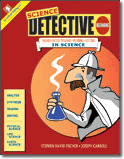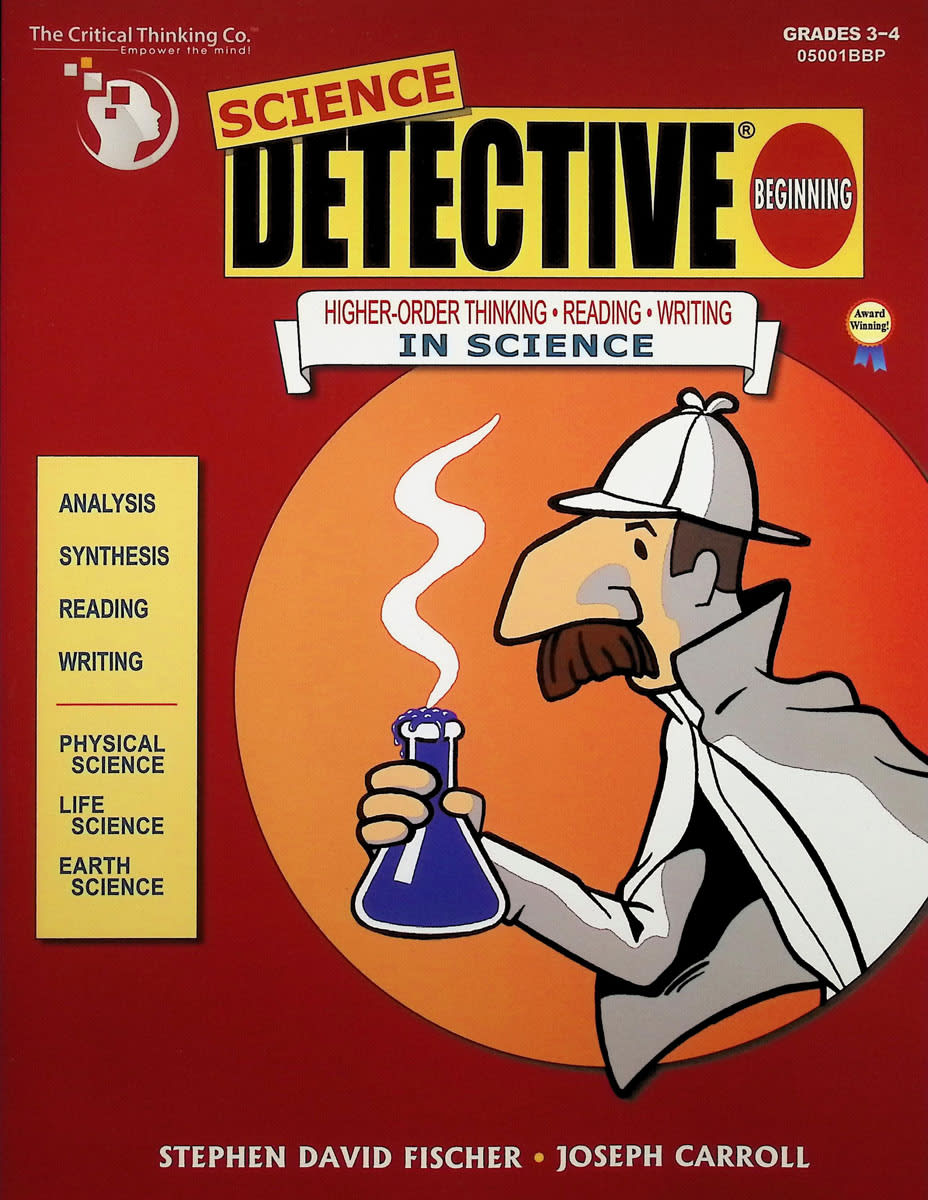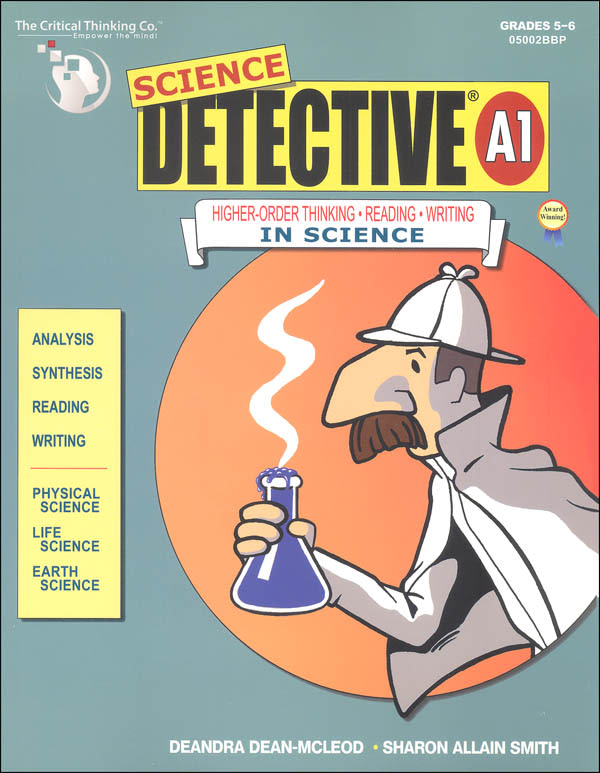As with other resources from The Critical Thinking Co., Science Detective teaches higher order thinking and reading, and some exercises require answers written as complete sentences. Each book is divided into three units: physical science, life science, and earth science, with a number of two-page topics covered within each unit. For each lesson, students read a passage on the topic and answer questions. Passages each have at least five paragraphs, so these are not simple reading comprehension exercises even though many of the skills rely on reading comprehension more than anything else. Each passage has letters identifying every paragraph and numbers identifying every sentence since students will identify paragraphs and/or sentences that support their answers for quite a few of the questions.
Questions for each passage come in many forms. There are a few true/false and multiple-choice questions, but there are one or more charts or graphs that students need to either complete or interpret to answer questions. There are also one or more questions requiring a full-sentence response.
The passages include content required by the National Science Standards (but not the Next Generation Science Standards). The design of the reading passages and questions is very much like those beginning to appear on standardized tests for science. In fact, Science Detective might be most useful for test preparation.
The Critical Thinking Co. says each book is a full curriculum. But even though the content is logically organized and covers each topic fairly well, there’s really not enough content for an entire school year. Yet, students can acquire a substantial amount of science education if they really learn the content and don’t just read through it sufficiently to find the answers to the questions. While Science Detective seems to me a good resource for teaching students to read scientific material carefully, they might focus too much on the details for each topic and miss the big picture, the integration of topics with one another. But then you will probably be using another core science resource that will do that and using Science Detective as a supplement. I see Science Detective as being particularly helpful for those using a real-books, hands-on approach who need to make sure their children can understand text-like science information, interpret charts and graphs, and answer questions.
The two books available in the Science Detective series are also available as interactive computer programs. Beginning level is for grades 3 and 4 and Level A1 is for grades 5 and 6. Print and computer program versions both use the same reading passages and questions.
Some of my readers are concerned about the treatment of evolution, but I found no mention of evolution in the Beginning level book that I reviewed. However, it does reference millions of years a few times in regard to the age of the earth. I can tell from the table of contents that Level A1 also speaks of a millions-of-years-old earth, but I can’t say whether evolution is mentioned.
The program is self-scoring and tracks each student’s progress. The computer program also adds simple games as rewards. The home license version of the program allows you to set up it for more than one child in your family, and the print version of the book can be photocopied for one home or one classroom. The answer key is at the back of the print book.












